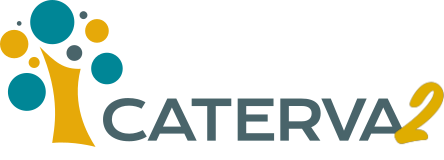
High-Performance Data Serving for Blosc2/HDF5
Caterva2 is a high-performance data server that revolutionizes interaction with Blosc2 and HDF5 datasets. It provides a powerful, flexible service for seamless and secure data access, supporting individual workflows, team collaboration, and public data sharing. Access your data through a Pythonic, NumPy-like API, a REST API, or an intuitive web interface for streamlined navigation, visualization, and manipulation.

Documentation and Tutorials
We provide extensive documentation and tutorials to help you get started with Caterva2. Whether you're a developer looking to integrate Caterva2 into your applications, or a data scientist wanting to leverage its capabilities for your datasets, our resources will guide you through the process.

How It Works
Watch this video to learn more about Caterva2, its main functionalities, and how it can streamline your workflows:
Key Features
- High-Speed Performance: Built on the Blosc2 compression and computation engine, Caterva2 delivers exceptional speed for data compression, decompression, and server-side computations, ensuring your data is always ready for analysis.
- Intuitive API: Seamlessly integrate Caterva2 into your workflows with its Pythonic, NumPy-like API, designed for a natural and efficient data interaction experience.
- Advanced Data Management: Organize complex datasets with robust support for intricate directory structures. The compression-first framework enables rapid data transmission and retrieval.
- Streamlined Visualization: The Caterva2 web interface is engineered for clarity and efficient data access, enabling direct engagement with your data without complex setup or steep learning curves.
Caterva2 is Free Software
Caterva2 is not just powerful; it is also Free Software licensed under the AGPL. This provides full transparency, the freedom to customize, and the assurance of a community-driven platform that fosters innovation and collaboration.
Find the source code on GitHub and join the community of developers and users who are shaping the future of data management.
Expert Support and Integration
Caterva2 is engineered for seamless integration into existing workflows and applications, with native support for popular data formats like Blosc2 and HDF5. This versatility makes it an ideal solution for diverse applications in scientific computing, data analysis, and machine learning.
At ironArray, we are committed to your success. We provide comprehensive support and consulting services for on-premises installation, cloud deployment, and custom integration. Our team is ready to help you unlock the full potential of Caterva2 for your data management challenges.